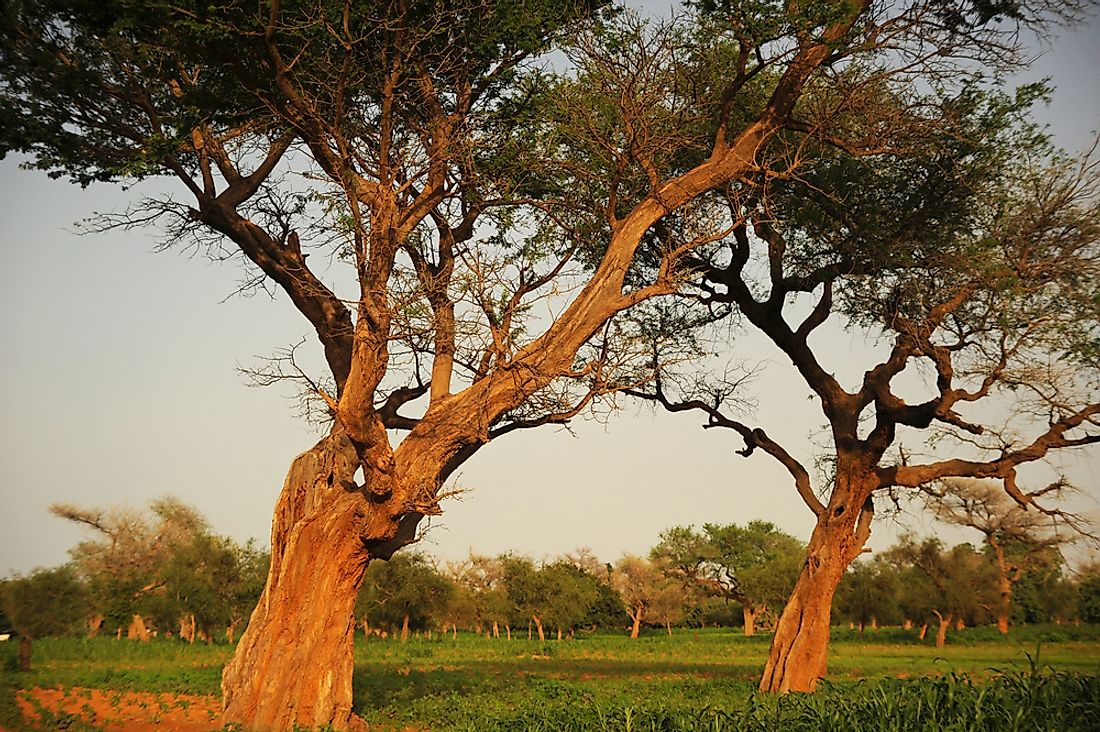Mali's National Parks And Reserves

Mali, a landlocked country in North Africa, is not heavily populated throughout. It has three different vegetation zones; the Niger River Basin at the center, the Sahara Desert in the north and the Senegal River on the south. Mali’s national parks and reserves are home to a broad range of both flora and fauna. They cover the Sahelian east-west zone to the Saharan desert zone. Bafing National Park is a valuable reserve to protect chimpanzees, while the massive Boucle du Baoulé is an important cultural site
Mali's National Parks And Reserves
Bafing National Park
Bafing national park was established in 2000 and covers 1,931 square miles. It lies in the southern Mali. It is part of the Bafing Biosphere; a protected area for chimpanzees, which comprises of large part of the Manding mountain range and Manding plateau. The Park is the only protected area for Chimpanzees in the plateau. It holds 1500-2000 chimpanzees. The Bafing Biosphere is a home to different breeds of flora. It supports the Western Derby’s eland. It rains in the National Park from June to October. The temperatures are always moderate throughout the year. The park faces threats. The pastoralists displaced due to the expansion of agriculture in the area surrounding the national park, deplete the vegetation of the park. The human kill chimpanzees for their skin. The park authorities are responsible for administration, management and conserving of the park. However, the control and management are inadequate.
Boucle du Baoulé National Park
Boucle du Baoulé National Park, situated in West African Savannah and established in 1982, covers 9,780 square miles. The national park has two biogeographic zones: the Sahelian zone to the north and Sudano-Guinean zone to the south. Vegetation includes wooden savanna, grasslands, bush savanna, riverine forest along river and gallery forests. The African antelope is found within the park, as well as giraffes, monkeys, and warthogs. February and June are the best time to observe fauna. The rainy season falls from June to October. The temperatures are moderate. The park faces a significant threat from the clearing of land for agricultural use. Hunting and competition from livestock have devastated the animals. The park is administered and managed by the National Parks Department that is under the Ministry of Natural Resources and Animal Husbandry.
Kouroufing National Park
Kouroufing National Park was established in 2002 and covers 215 square miles Southwestern Mali. The park is part of the Bafing Biosphere. To the north of the park is Lake Manali, an artificial lake. The Bafing Biosphere is a home to different breeds of fauna. It supports the Western Derby’s eland. The park is dedicated to the Chimpanzees conservation. It rains in the National Park from June to October, although the temperatures are always moderate throughout the year. The biosphere has no facilities or infrastructure for tourists. Instances of poaching have increased in the recent past. The park is administered and managed by the National Parks Department that is under the Ministry of Natural Resources and Animal Husbandry.
Wongo National Park
The Wongo national park was established in 2002 and covers 206 square miles in southern Mali. The park is part of the Bafing Biosphere (together with Kouroufing National Park and Bafing National Park). The biosphere comprises of Manding plateau and Manding Mountain. To the northeast of the park is Lake Manatali, an artificial lake. It is a park dedicated to the conservation of chimpanzees. It rains in the national park from June to October. The temperatures are always moderate throughout the year. Instances of poaching have increased. The park is administered and managed by the National Parks Department that is under the Ministry of Natural Resources and Animal Husbandry.
Threats and Conservation
The major threat to the wildlife of Mali is deforestation, hunting, proliferation of livestock, agricultural activities, and desertification. Other factors posing threats are pollution, mining operations, and fire breakouts. The conservation of the protected areas in Mali falls under the responsibility of National Parks of Mali, while the forests fall under the forest service. Significant conservation efforts have been launched in Mali with the funding from the Global Environment Facility under the auspices of UNDP, which aims to increase the area under the protection significantly. It also attempts to reinforce the management instruments to attain sufficient protection area, especially in the southern part of the country aiming the endangered species like the Western Chimpanzee and Derby Eland.
Mali's National Parks And Reserves
| Mali's National Parks | Area |
| Bafing National Park | 1,931 square miles |
| Boucle du Baoulé National Park | 9,780 square miles |
| Kouroufing National Park | 215 square miles |
| Wongo National Park | 206 square miles |







